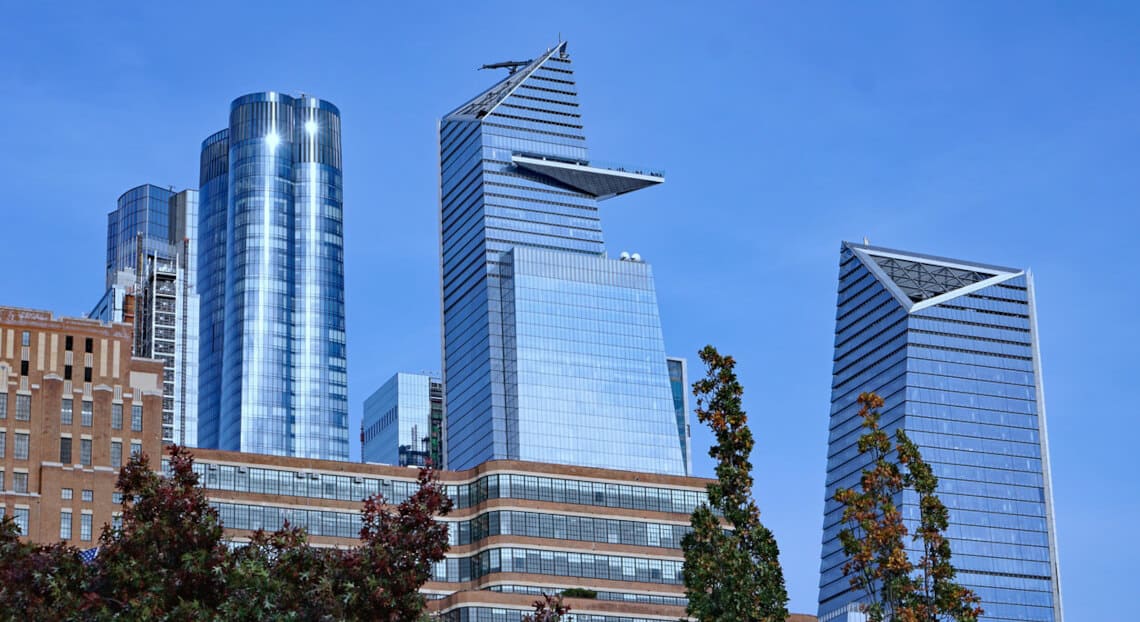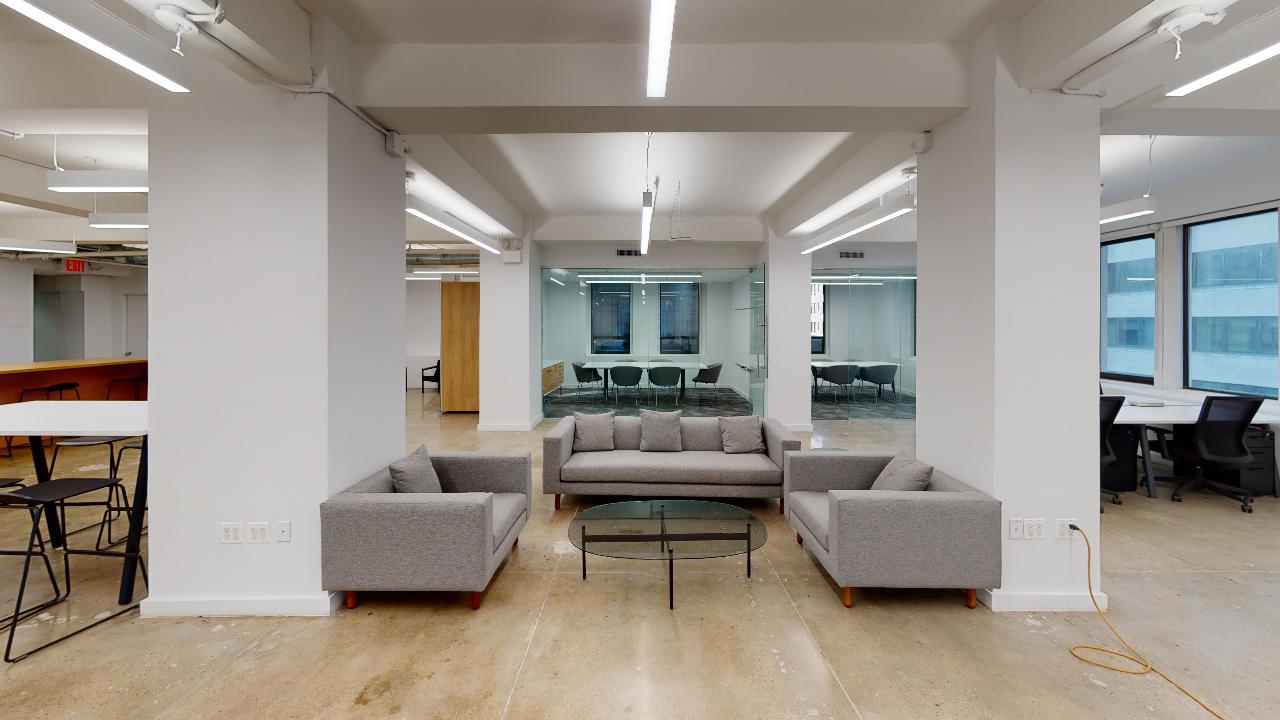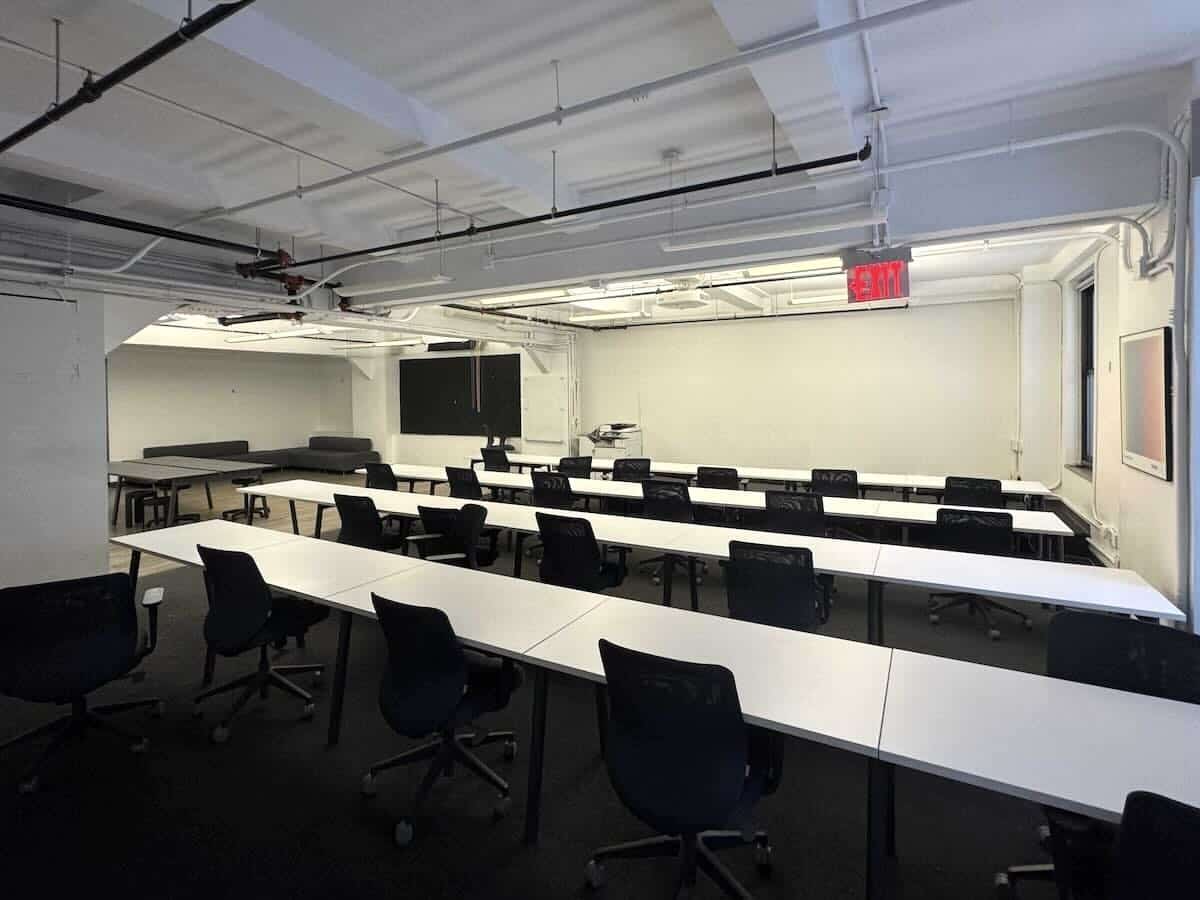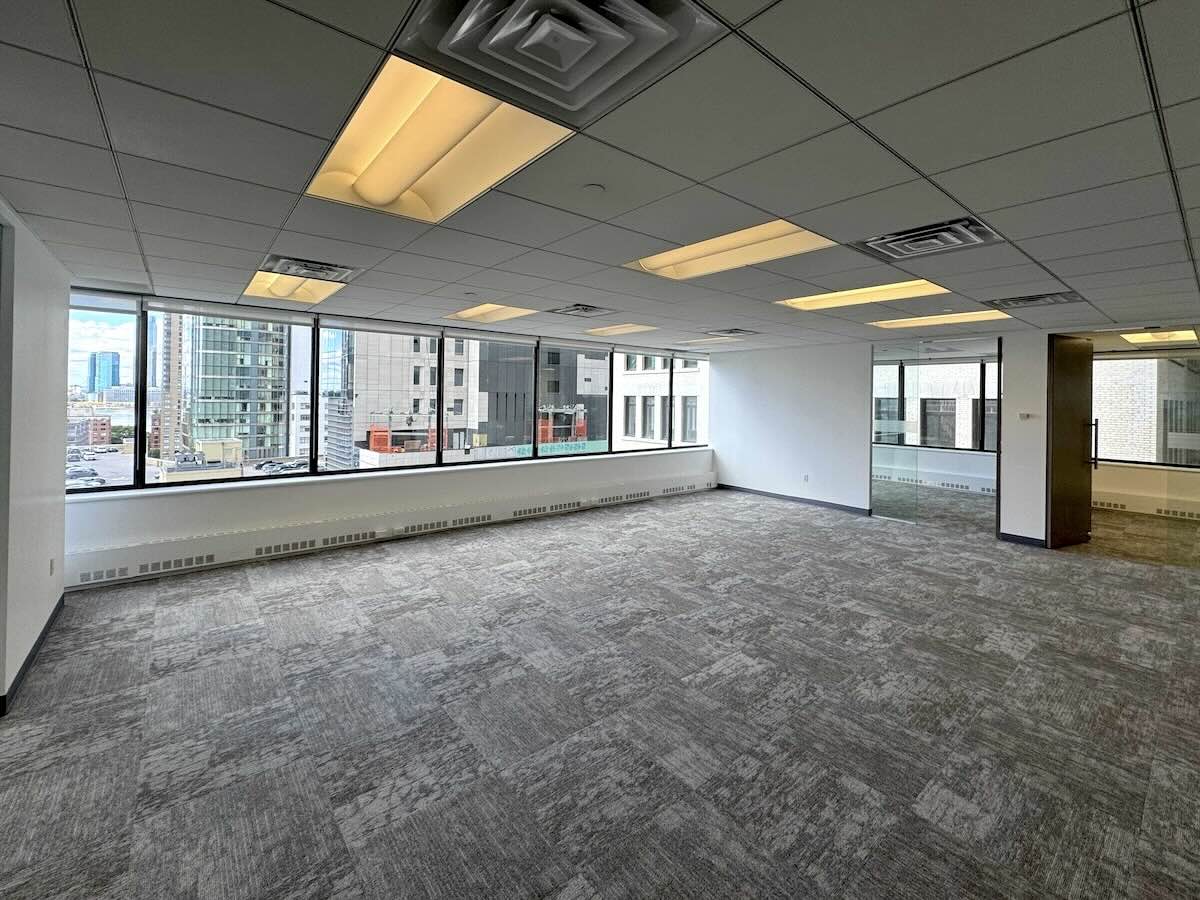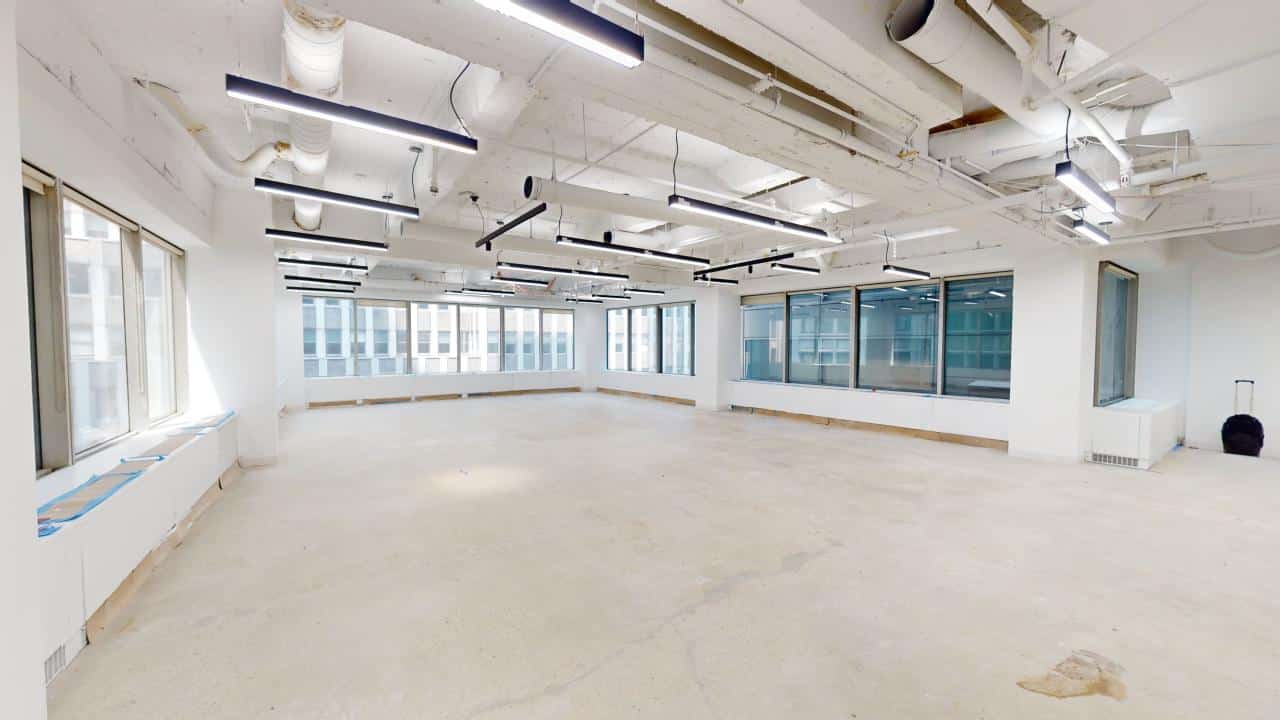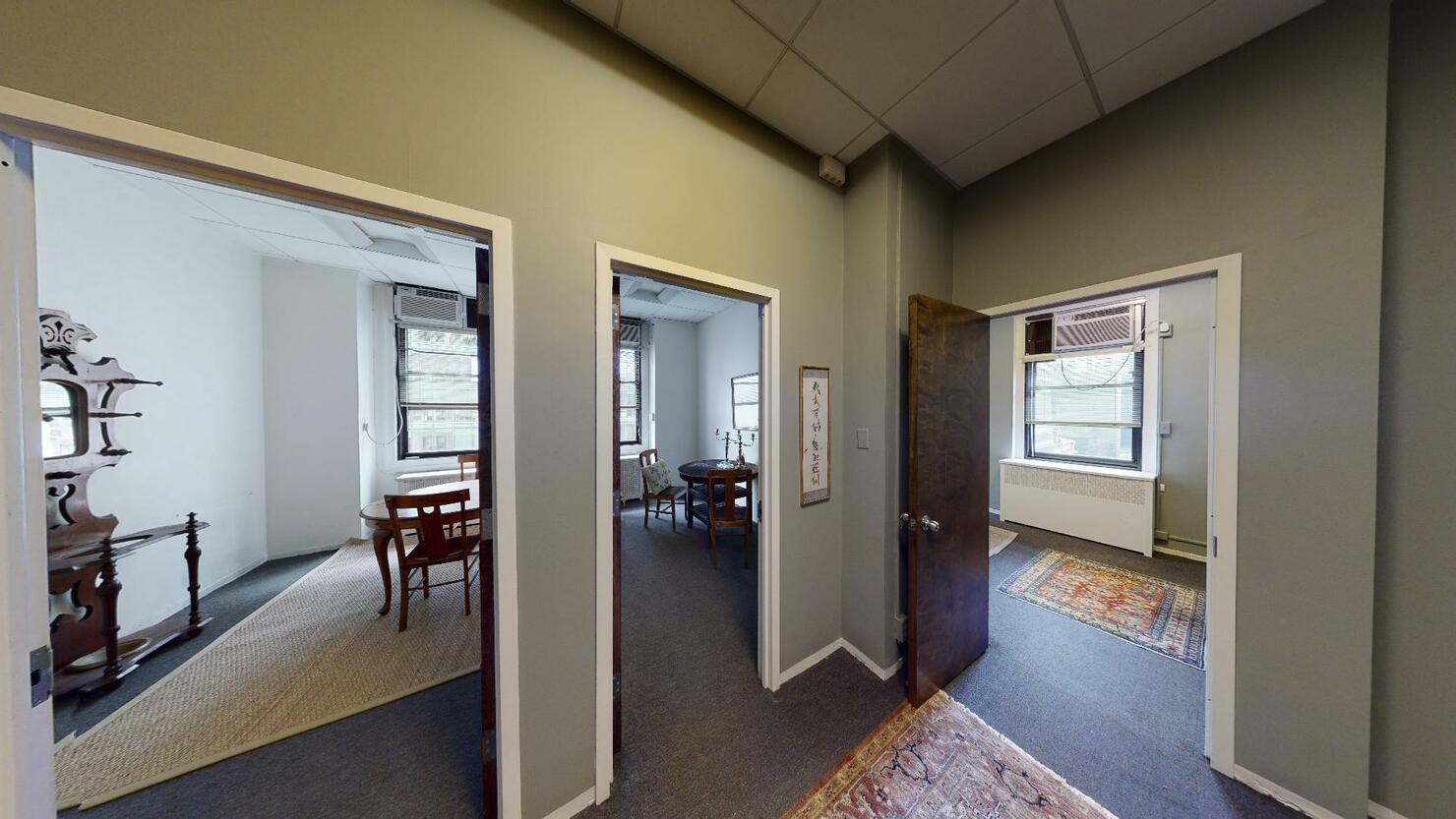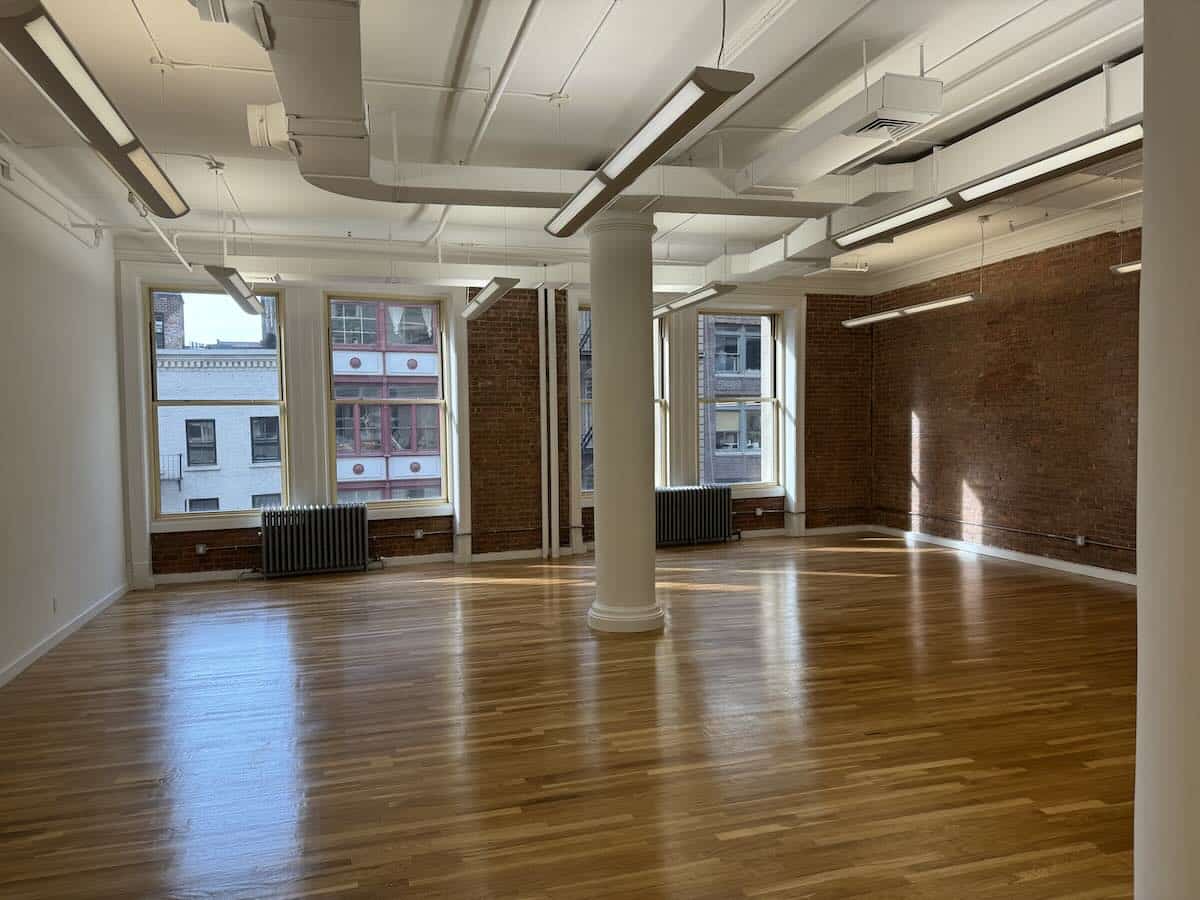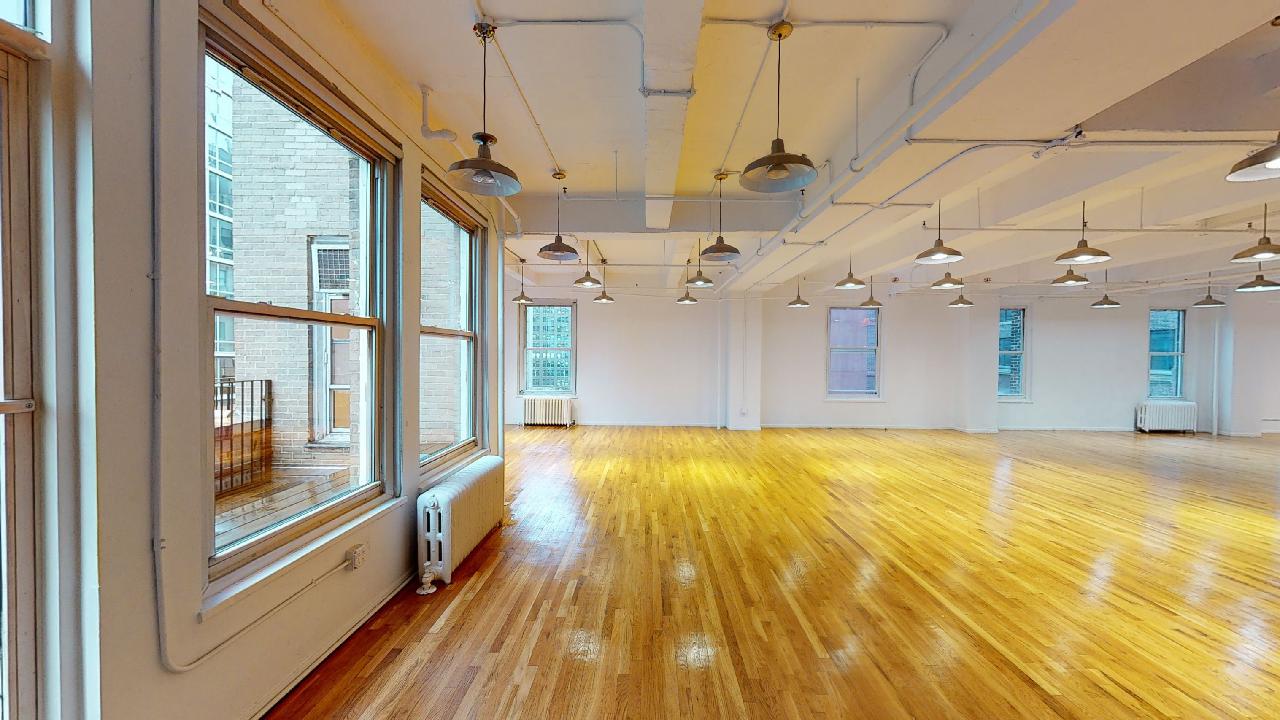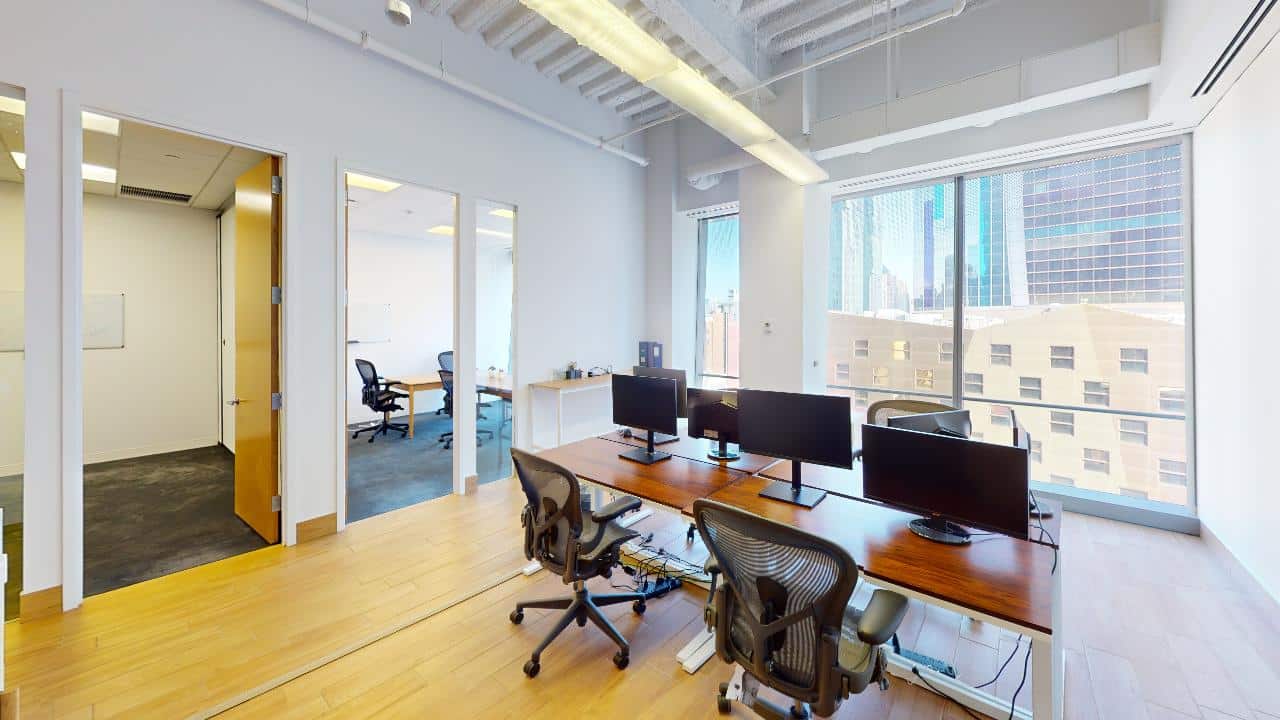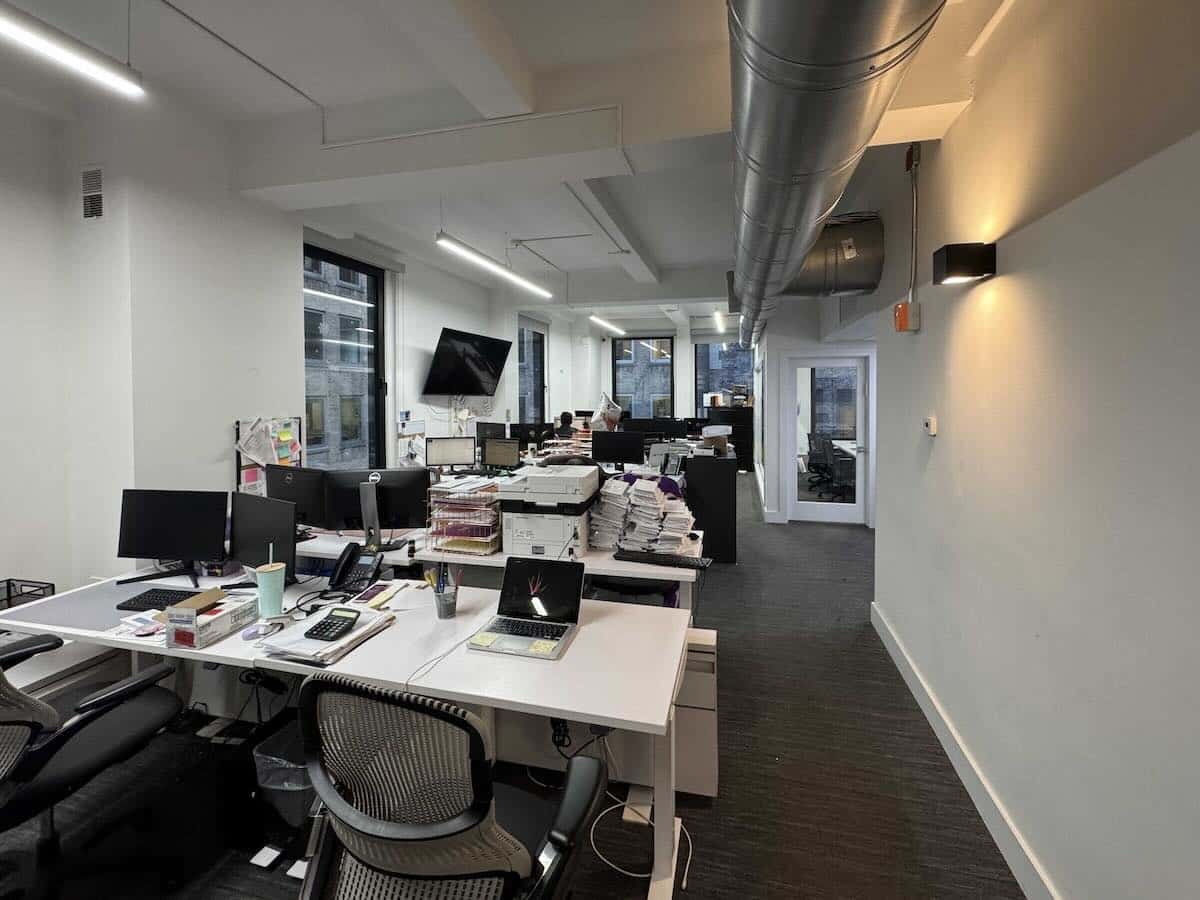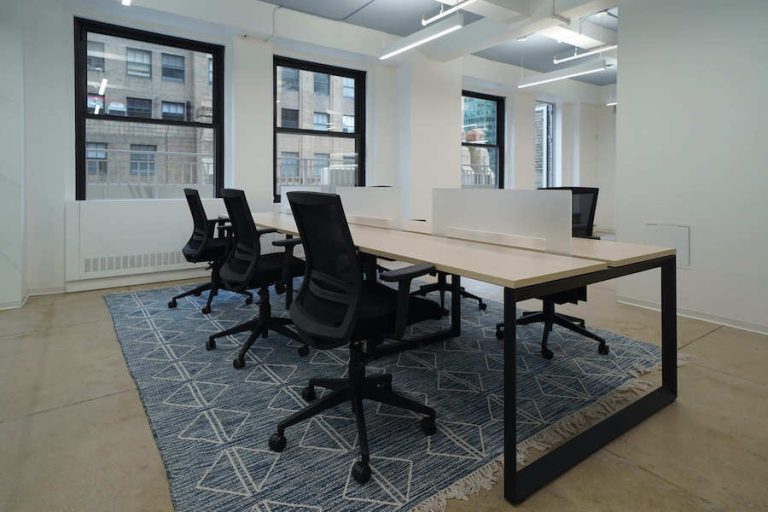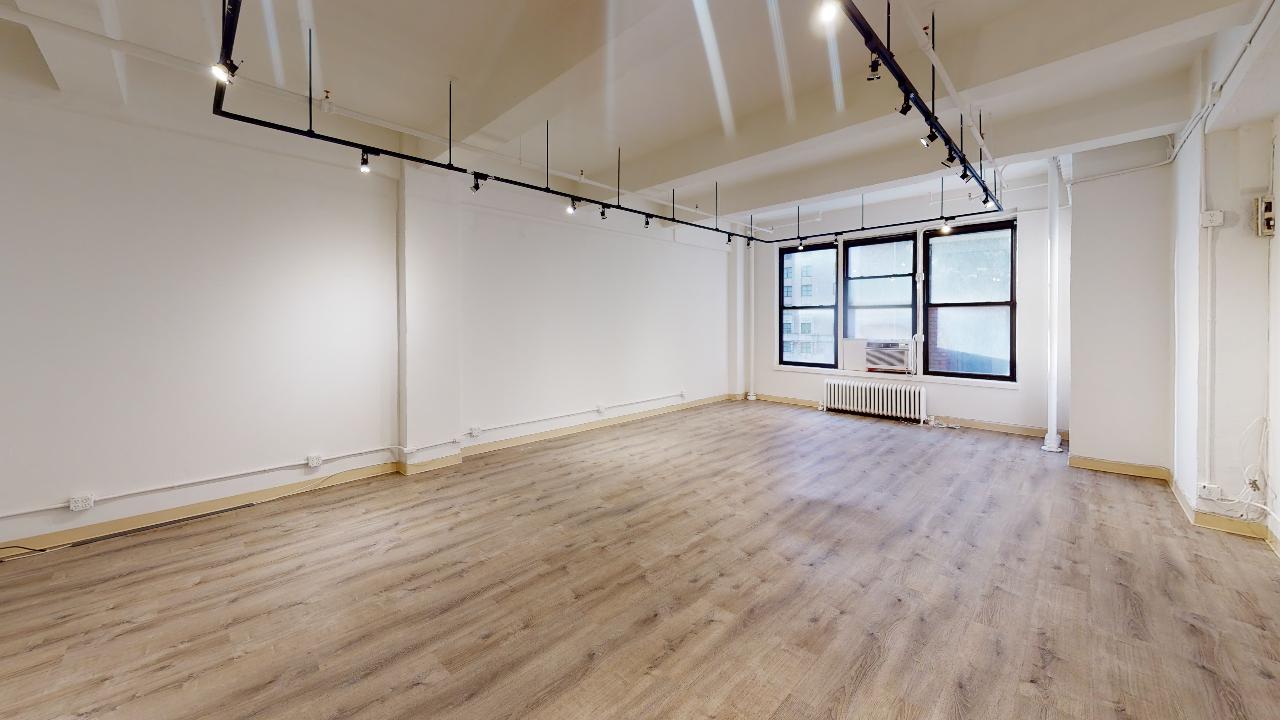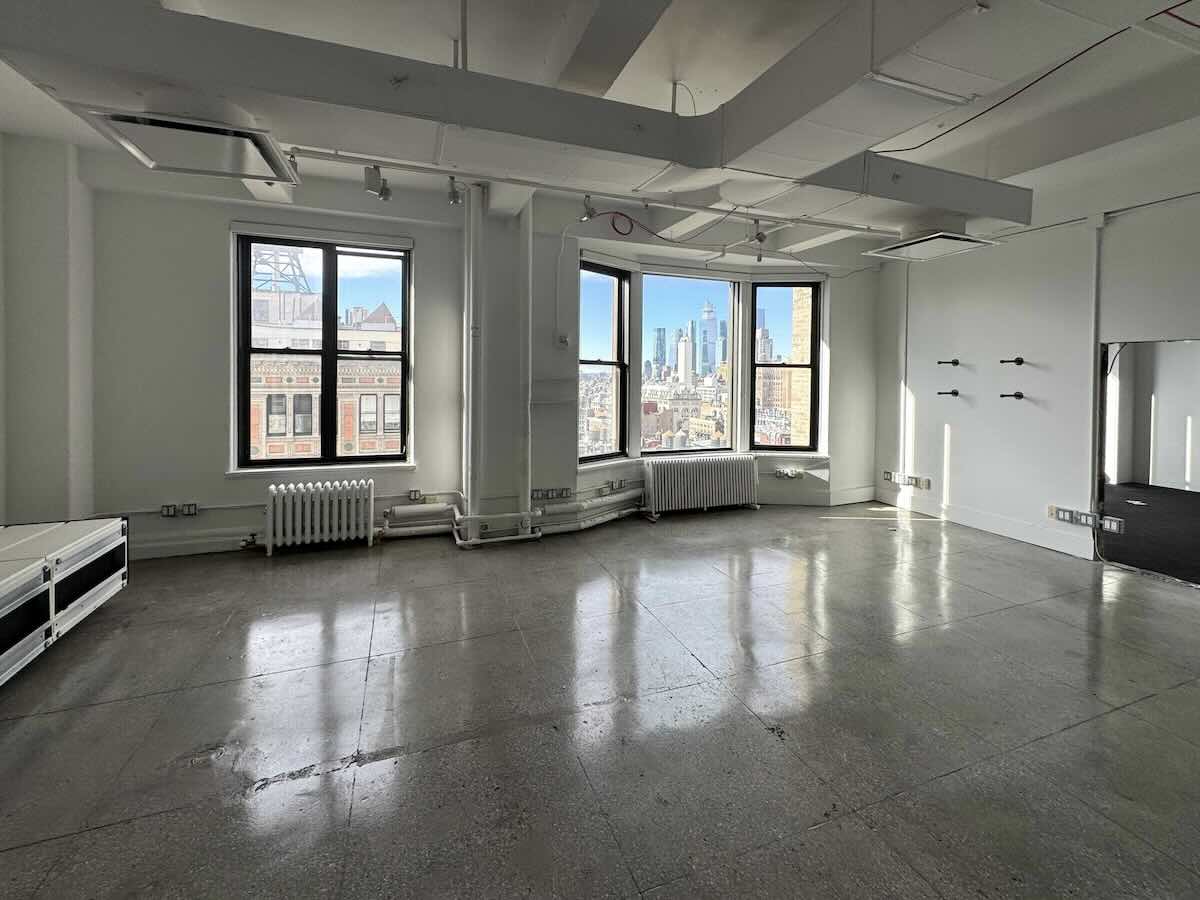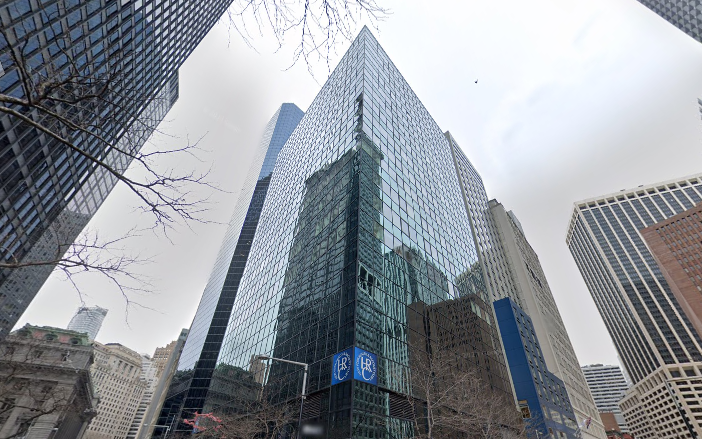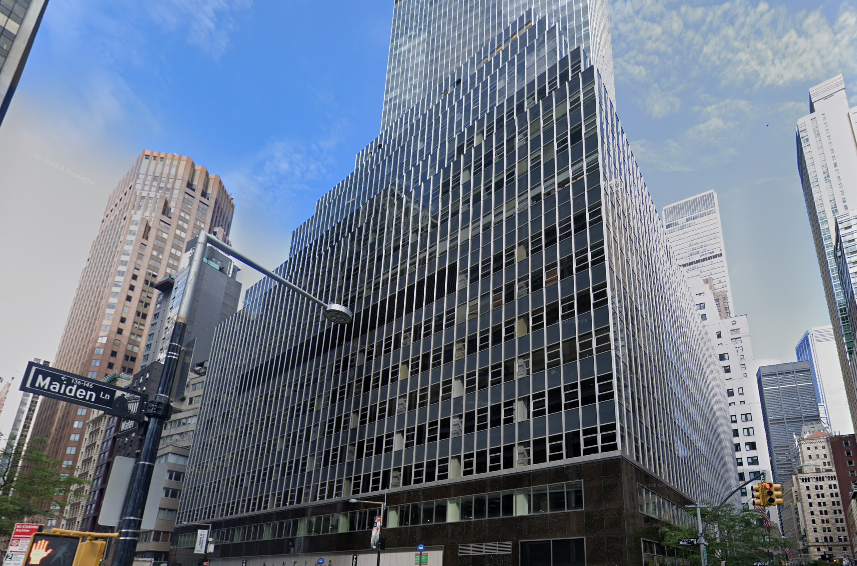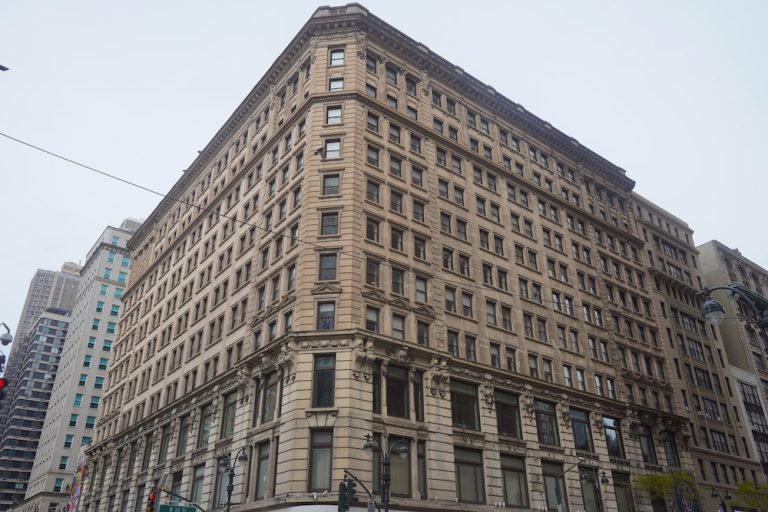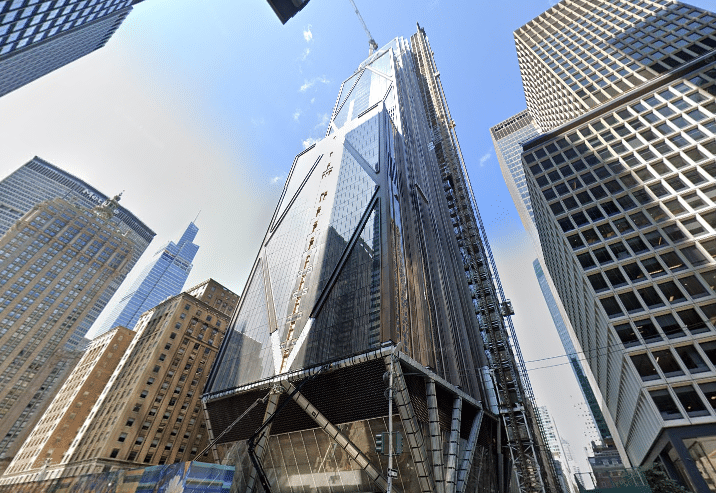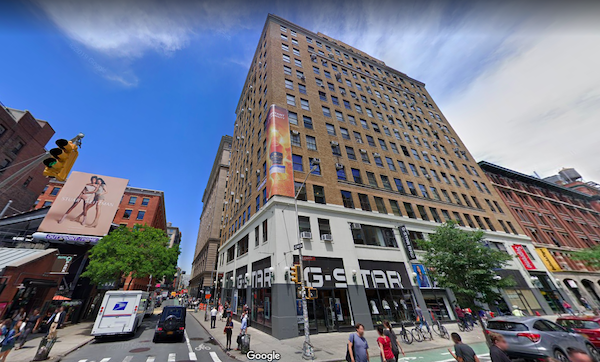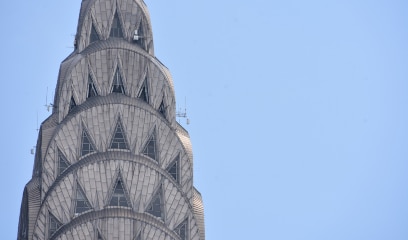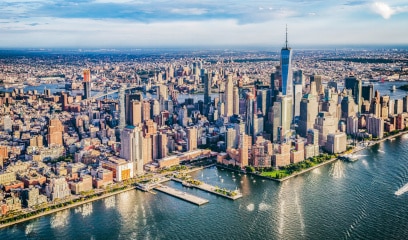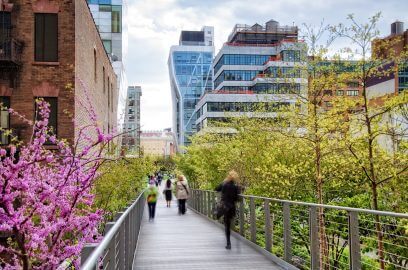Picture New York City as the backdrop of an epic battle, not with swords and shields, but with skyscrapers and subway maps—a modern-day arena where giants play a game of kings. However, it’s not just any game. It’s a high-stakes dance of decisions where big-name companies, the kind you see headlining stock market tickers, mull over where to set their thrones. They’re not looking for ordinary office space; they’re hunting for kingdoms equipped with cutting-edge castles (Class A office buildings), reasonable costs, accessibility, proximity to key clients, and, of course, the gold: attractive tax incentives and amenities. That’s why examining the data behind New York City’s new constructions is so important.
Remember the whirlwind of excitement with Amazon’s flirtation with New York for its HQ2 in 2019? That was a glimpse into how monumental these decisions are for a city. So, we did a deep dive into the latest data on New York City’s new constructions from the past five years, the present, and the future. With a portfolio of buildings that blend the future with the now, New York and its architects and planners are on a mission. Beyond building offices, they’re crafting environments that resonate with industry titans. The message is clear: headwinds and all, New York City should remain a global business center for years to come.
New York’s Commercial Office Evolution: Past, Present, and Future
Welcome to the dynamic world of New York City’s new constructions, a place where ambition meets innovation, especially in the realm of commercial office spaces. Over the past five years, this iconic city reshaped its commercial office landscape with a boldness that’s as captivating as the city itself. So, let’s dig through the data.
Commercial Office Buildings Completed Since 2019
The five largest commercial office projects completed over the last five years, according to the total rentable building area (RBA), show some interesting trends. Notably, all are Class A properties located in Penn Plaza/Garment District.
- 50 Hudson Yards: This building claims the skyline with 2,970,315 SF and 77 stories. Completed in 2022, it has floors that average 37,757 SF.
- The Spiral (66 Hudson Blvd): Since its completion in 2022, this iconically designed building has offered 2,869,810 SF over 66 stories. Moreover, the floors average 43,482 SF.
- 30 Hudson Yards: Marks its territory with 2,600,000 SF, soaring 90 stories. In addition, it’s been fully leased since 2019 while each floor offers 35,155 SF.
- One Manhattan West (1 Manhattan West) Graced the skyline in 2019 with 2,015,156 SF over 69 stories. It boasts a 98.55% lease rate.
- 2 Manhattan West (385 9th Ave): Launched in 2023, it contributes 1,976,602 SF over 58 floors. What’s more, each floor encompasses 36,000 SF.
Commercial Office Buildings Currently Under Construction
Towering office projects under construction are also set to reshape the skyline. These projects, notable for their vast square footage and modern amenities, promise to cater to the city’s growing business demands:
- 270 Park Ave: Rising as the JPMorgan Chase Headquarters, this Midtown marvel spans 2,500,000 SF and is fully pre-leased. Set for a 2025 finish, the 70-story Class A giant is the brainchild of Rudin Management Company and Foster & Partners, LTD.
- 137 Varick St (4 Hudson Square – Disney HQ): Disney’s headquarters will tower with 1,200,000 SF over 22 floors in Hudson Square. Designed by Skidmore, Owings & Merrill LLP, each floor will spread across 55,545 SF.
- 1520 1st Ave: This Upper East Side tower will deliver 435,000 SF by 2025. Already 46.01% leased, the 30-story building highlights Extell Development Company’s impact uptown.
- 2440 Fulton St: This 5-story 400,000 SF Class B space reflects North Brooklyn’s dynamism. It’s 81% leased, showcasing Leser Realty’s commitment to growth.
- 271 11th Ave (The Foundry at Terminal Warehouse): This 6-story project is making strides with 356,344 SF in Chelsea’s Terminal Warehouse. L&L Holding Company, LLC and COOKFOX Architects ensure its 15.43% leased space shines with modernity.
Commercial Office Buildings Planned for Completion by 2029
Finally, let’s take a look at New York’s new constructions planned through 2029. Focused mainly in Manhattan and Queens, these future buildings predominantly boast Class A spaces, state-of-the-art amenities, and massive floor areas.
- 46th Rd (Anable Basin): Anable Basin could transform Queens with a mammoth 5,280,000 SF Class A space, marching towards a 2030 launch. TF Cornerstone, Inc. is at the helm, revolutionizing the borough’s corporate scene.
- 2 World Trade Center: 2 World Trade Center heralds Downtown’s renewal, bringing 2,800,000 SF of premier space by 2026. It is already 8.48% pre-leased and boasts a fitness center and roof terrace, with Silverstein Properties and Bjarke Ingels Group leading the design.
- 175 Park Ave (Commodore): The Commodore at 175 Park Ave is gearing up to be a Midtown standout, unfurling 2,563,000 SF of cutting-edge offices by 2027. Its 89 stories are a brainchild of Skidmore, Owings & Merrill LLP, powered by TF Cornerstone and RXR Realty.
- 70 Hudson Yards: 70 Hudson Yards is poised to enrich the Penn Plaza/Garment district with 1,200,000 SF across 45 stories by 2026. The Related Companies and Roger Ferris and Partners LLC craft this architectural gem.
- 260 12th Ave: Chelsea’s 260 12th Ave promises a chic 25-story addition that will deliver 1,100,000 SF of Class A office space by 2026. The Georgetown Company is sculpting this modern commercial hub.
Evolving Market Drivers
Let’s add some context to these lists by examining some evolving market drivers in New York City commercial real estate: a combination of environmental consciousness and the digital revolution.
Sustainability and Green Building Initiatives
In New York City, the commercial real estate market is riding a green wave with a robust commitment to sustainability. Central to this transformation is the proliferation of LEED-certified buildings; over 40% of the city’s commercial properties now flaunt this eco-friendly badge. Key developments such as 1 Willoughby Square in Brooklyn, on track for LEED Silver certification, exemplify this trend and represent a fundamental shift in how spaces are built and utilized. Furthermore, with the city’s goal to be carbon neutral by 2050—a vision further amplified by the expansion of Local Law 86 in 2016, there’s a rush for new and existing buildings to meet such standards.
As other initiatives like the $50 million Empire Buildings Challenge lead the charge, New York’s status as an environmental steward become more attractive, magnetizing a new breed of tenants. Companies increasingly crave spaces that promise a lower carbon footprint, recognizing the long-term savings and brand value. Moreover, JLL’s research corroborates this, noting a ‘green premium’—7.1% higher rents in eco-efficient buildings throughout eight major North American cities.
Technological and Flexible Workspaces
The tech sector’s rise adds another layer of dynamism to New York City commercial real estate. Between 2016 and 2021, tech firms accounted for 22.3% of all new companies in the city. Additionally, tech employment surged by 33.6% even as other sectors declined. So, now as it boasts over 172,570 tech jobs valued at $189 billion, NYC is witnessing a startup boom.
Further fueling this influx is a demand for workspaces blending flexibility with advanced tech amenities. Spaces like The Refinery at Domino are prime examples. They offer adaptable environments equipped with high-speed internet and collaborative zones fit for everything from fledgling startups to tech behemoths. Moreover, with a significant portion of new buildings investing in smart technologies and agile designs, NYC is not just attracting a kaleidoscope of tech talent but is also setting the stage for the future.
Diverse Tenant Appeal
New York City’s new constructions also emphasize attracting diverse tenants. Indeed, there’s a strategic push to cater to both the burgeoning tech and creative sectors. However, traditional industries that have long been the city’s economic stalwarts are still a priority.
Attracting the Creative and Tech Sectors
We’ve already examined New York City’s booming tech sector. Now, let’s examine how recent commercial developments’ design, architecture, and amenities intentionally meet these demands. Hudson Yards and Brooklyn shine as prime examples. Here, buildings boast open spaces, high-speed internet, and areas designed for collaboration. What’s more, such a focus on flexible, innovative workspaces directly supports the tech sector’s expansion, highlighting the importance of a collaborative environment.
Catering to Traditional Industries and Corporate Giants
On the flip side, NYC’s financial districts and traditional business centers are adapting to remain appealing to established sectors. This transition involves the incorporation of modern amenities within prestigious addresses and the introduction of new Class A developments with enhanced connectivity and amenities tailored for traditional industries. For instance, new developments like The Spiral at 66 Hudson Blvd and 107 Greenwich St in Downtown, along with other under-construction properties such as 2 World Trade Center, 665 5th Ave, and 260 12th Ave, expected to be completed between 2024 and 2026, blend the latest in building technology with the prestige and accessibility that financial and legal firms value. It signifies a broader trend of modernization, where even the most historically significant districts are reimagining themselves to meet the changing needs of their traditional tenant base.
Pricing Trends and Financial Implications
The heartbeat of New York City’s office rental market is one dictated by location, amenities, and economic forces. Here’s a snapshot of the critical insights and data driving the dynamics of rent and pricing:
Rent and Pricing Dynamics
First, let’s distill this analysis into key insights punctuated by specific examples and quantitative data:
- The Premium on Location: Central to pricing dynamics, the Midtown area, particularly the Penn Plaza/Garment submarket, exemplifies the premium on location. For instance, The Spiral at 66 Hudson Blvd boasts estimated rents ranging from $121.50 to $148.50 per square foot. In comparison, 107 Greenwich St, a Class A property near the World Trade Center, has rents ranging from $49.54 to 60.54 per square foot.
- Amenity-Rich Developments Commanding Higher Rents: Comprehensive amenities influence rental rates. Upcoming projects in Chelsea (271 11th Ave), Brooklyn (80 Flatbush Ave), and Queens (3801 Queens Blvd) emphasize features such as 24-hour access, hardwood floors, natural light, and advanced conferencing facilities.
- Architectural and Building Excellence as a Benchmark: The market’s preference for Class A buildings, which represent the pinnacle of quality and design, directly impacts rental pricing. Notably, modern constructions like One Vanderbilt, with its state-of-the-art design and sustainability features, set the standard for future developments and drive up rental rates.
- Influence of New Constructions on Market Dynamics: The influx of new office spaces, particularly in emerging neighborhoods, gives the market a competitive edge. For example, developments in Hudson Yards reshape the skyline and the rental landscape. Cutting-edge facilities and amenities appeal to high-profile tenants.
- The Evolving Nature of Office Spaces: The post-pandemic world has ushered in a demand for flexible, health-centric office environments. Buildings offering outdoor spaces, enhanced ventilation systems, and adaptable workspaces are increasingly valuable. This shift will likely play a critical role in future pricing strategies, as seen in the planned offerings of spaces like those in the Hudson Yards and Brookfield Place.
Economic Impact on Local Communities
In New York City, this wave of new commercial developments is also weaving a new economic narrative. From generating employment to revitalizing neighborhoods, here’s how:
- Historic Job Growth: NYC is on a job creation spree, hitting a new all-time high with 7,300 new positions in December 2023 alone and a whopping total of 272,200 jobs since the Adams administration took office. This boom is a clear indicator of the city’s thriving economic health.
- Venture Capital Momentum: Despite a dip due to higher interest rates, venture capital showed signs of recovery towards the end of 2023. NYC companies bagged $18.7 billion in funding over the year, with a remarkable 41.4% increase in the fourth quarter, breathing new life into the local startup ecosystem.
- Office Space Renaissance: Over 10.7 million square feet of office space were leased in the last quarter—the most since early 2022—and the city is witnessing a remarkable transformation. This surge, amounting to a 35% increase from the previous quarter and 13% from the previous year, hints at a reimagined city.
- Incentivizing Renovations: The Manhattan Commercial Revitalization Program (M-CORE) is a game-changer, offering tax incentives for transforming aging commercial buildings. Targeted at structures south of 59th Street, this initiative aims to reduce vacancies and lure top-tier tenants, revitalizing Manhattan’s commercial appeal.
- Financial Incentives Galore: Beyond M-CORE, the NYCIDA is extending a variety of financial perks to ease the cost burdens associated with expansion, relocation, and improvement projects. These range from property tax reductions up to 25 years, reduced taxes on mortgage recordings, to sales tax waivers on construction-related purchases.
Visionary Developers and Their Projects
Finally, every building in New York City tells a story. New York City’s new constructions and commercial scene is competitive. Many landlords and developers are chomping at the bit for a piece of the pie. However, several stand out as reshaping New York City’s present and future with a mix of creativity, community, and care for the planet.
Leading Developers and Their Buildings
First, Two Trees has a knack for turning overlooked spaces into neighborhoods everyone talks about. Take DUMBO—once a forgotten stretch under the Manhattan Bridge, now a vibrant community hub, thanks to their vision. They mix the old with the new, blending luxury living with lush parks, all while keeping sustainability at the heart of their projects.
Then, JEMB Realty Corp. brings its family spirit to the towering skyscrapers of New York. They’re the minds behind places like Herald Towers and One Willoughby Square, where modern design meets eco-conscious living. Their entrepreneurial drive turns buildings into bustling centers for life and work, always with an eye on the future.
Finally, the famous Tishman Speyer is all about dreaming big but building responsibly. From The Spiral to Rockefeller Center; their buildings do more than touch the sky—they reach for a greener future. With a commitment to LEED certifications and net zero emissions, their projects are spaces to thrive for the planet and the people.
Future Developments and Market Predictions
New York City’s new constructions and commercial real estate are on the brink of transformation. With an eye on the future, let’s see how these ongoing developments align with broader market predictions influenced by economic, technological, and environmental considerations:
- Growing Demand & Construction Trends: According to CoStar data, with 60% of properties through 2026 still in the proposed stage and 40% underway, there’s a clear anticipation of more office space demand. An expansive pipeline underlies a robust confidence in New York City’s commercial real estate future.
- Geographical Diversification: Shifting focus from the traditional Manhattan epicenter, Brooklyn and Queens are emerging as vibrant commercial hubs. Lower land costs and the appeal of new developments catalyze this shift. Moreover, it promises a more diversified and dynamic real estate portfolio across the city.
- Notable Developments on the Horizon: Projects like the $2.5 billion Fordham Landing and the Bronx Logistics Center stand as harbingers of change, poised to redefine their respective neighborhoods. Similarly, high-rise developments at 420 Carroll St. and 505 State St. in Brooklyn signify a broader trend of ambitious urban renewal and expansion.
- Market Predictions Aligning with Economic Trends: The rebound in office occupancy levels and a shift towards smaller office spaces reflect a post-pandemic market recalibration. Moreover, the flourishing retail sector mirrors a broader economic recovery, albeit tempered by the looming concerns over the city’s budget crisis.
- Embracing Technological and Environmental Innovations: A significant focus on sustainability and smart technology integration is also shaping the future of New York City’s new constructions. As New York City aims to be net zero by 2050, developments increasingly incorporate green building practices and state-of-the-art tech amenities.
Final Takeaways
New York City’s new constructions and commercial real estate scene buzz with innovation. Visionary developers and a forward-looking blend of sustainability, technology, and community shape the market and its competitive edge. In this environment, we notice several key and emerging themes: the green building movement, the tech sector’s expanding footprint, and the strategic diversification beyond Manhattan to boroughs hungry for development.
Looking ahead, NYC’s commercial real estate trajectory is vibrant and promising. Each development and policy shift mirrors the city’s broader ambitions for a sustainable, technologically advanced, and inclusive urban landscape. So, as New York City stands on the brink of a new era, it promises a domain as dynamic and influential as ever.
